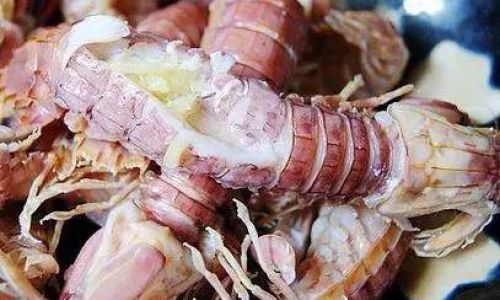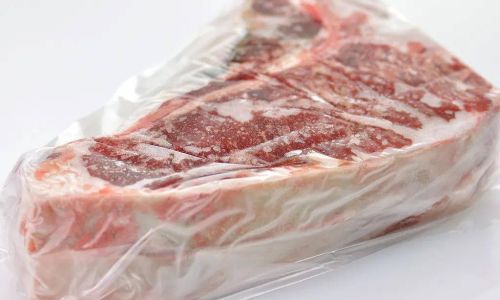Introduction
Crawfish, also known as crayfish or crawdads, are a delightful delicacy enjoyed across various regions, particularly in the southern United States where annual crawfish boils are a cherished tradition. Their unique flavor and texture make them a standout in seafood dishes, from spicy boils to elegant appetizers. However, preserving fresh live crawfish can be challenging, especially if you’ve caught or purchased them in bulk and plan to consume them over an extended period. This comprehensive guide will walk you through the various methods of preserving fresh live crawfish, ensuring they remain vibrant and delicious until you’re ready to cook them.
Understanding Crawfish Freshness
Before diving into preservation techniques, it’s crucial to understand how to identify fresh crawfish. Fresh live crawfish should have a bright, vibrant color—typically reddish-brown or greenish-brown depending on their species and environment. Their bodies should be firm and not overly soft, and their claws should snap back when touched, indicating they are alive and vigorous. Avoid crawfish with dull colors, slimy shells, or a strong, unpleasant odor, as these are signs of decomposition.

Immediate Use: The Best Option
The most straightforward way to ensure the freshness of crawfish is to use them immediately after purchase or harvest. This approach guarantees that you’re working with the highest quality crawfish, maximizing their flavor and texture. If you plan to cook them within a few hours, keep them in a cool, shaded area with plenty of ventilation. Avoid direct sunlight and high temperatures, which can expedite their demise.
Short-Term Preservation: Keeping Crawfish Live
If you need to keep crawfish alive for a day or two, there are several effective methods:
-
In a Cooler with Ice Packs

- Fill a large cooler with an inch or two of water.
- Place ice packs around the perimeter of the cooler, but not directly in the water. The goal is to maintain a cool environment without freezing the crawfish.
- Arrange the crawfish in the cooler, ensuring they are not overcrowded.
- Check the water level periodically and replace ice packs as needed to keep the temperature cool but not freezing.
- Drain any excess water if it accumulates, as too much water can reduce oxygen levels.
-
In a Wet Cloth or Towel
- Moisten a clean cloth or towel with cold water.
- Wrap the crawfish loosely in the cloth, ensuring they are not packed tightly together.
- Place the wrapped crawfish in a ventilated container, such as a perforated plastic bin or a basket lined with newspaper.
- Store in a cool, dark place, ideally with a temperature between 40-50°F (4-10°C).
- Check the cloth periodically to ensure it remains moist but not soaked.
-
In a Fish Tank or Aquarium
- If you have a large enough fish tank or aquarium, you can keep crawfish alive for a couple of days.
- Fill the tank with clean, fresh water.
- Use an aerator to increase oxygen levels in the water.
- Monitor the water quality and temperature closely, maintaining a temperature between 50-60°F (10-15°C).
- Feed the crawfish lightly if you plan to keep them for more than a day, using fish food or vegetable scraps.
Longer-Term Preservation: Freezing Crawfish
For longer-term storage, freezing is the most effective method. While freezing does alter the texture slightly, it preserves the flavor and nutritional value well. Here’s how to freeze crawfish:
-
Preparation

- Start with fresh, live crawfish.
- Rinse them thoroughly under cold running water to remove any dirt or debris.
- You can either freeze them whole or process them further by cleaning and removing the heads and tails before freezing.
-
Blanching (Optional but Recommended)
- Blanching helps to kill bacteria and enzymes that can cause spoilage, improving the quality of the frozen crawfish.
- Bring a large pot of salted water to a rolling boil.
- Submerge the crawfish in the boiling water for about 2-3 minutes.
- Quickly remove them using a strainer or slotted spoon and plunge them into an ice water bath to stop the cooking process.
- Drain well and let them cool completely before freezing.
-
Freezing Techniques
- Whole Crawfish: Place the cleaned and dried whole crawfish in single layers on baking sheets lined with parchment paper. Freeze until solid, then transfer to airtight freezer bags or containers. Label with the date and return to the freezer.
- Tails Only: If you’ve removed the heads and tails, arrange the tails in a single layer on baking sheets and freeze. Once frozen, transfer to freezer bags, removing as much air as possible before sealing.
- Vacuum Sealing: For the best long-term preservation, use a vacuum sealer to remove all air from the packaging before freezing. This minimizes freezer burn and extends the shelf life.
-
Storage
- Place the sealed containers or bags in the freezer, ensuring they are not crammed together to allow for proper air circulation.
- Crawfish frozen whole can be stored for up to 6-9 months, while tails may retain optimal quality for 4-6 months.
Thawing and Cooking Frozen Crawfish
When you’re ready to use your frozen crawfish, proper thawing and cooking techniques are essential to maintain their quality:

-
Thawing
- The best way to thaw crawfish is in the refrigerator overnight. This method ensures a slow, even thaw that prevents the formation of ice crystals, which can damage the texture.
- If you need to thaw them quickly, place the sealed bag or container in a bowl of cold water, changing the water every 30 minutes until fully thawed. Avoid using hot water, as this can cause partial cooking and texture degradation.
-
Cooking
- Once thawed, cook the crawfish as you would fresh ones. Popular methods include boiling, steaming, grilling, or incorporating them into various recipes.
- Remember that thawed crawfish may cook slightly faster than fresh ones, so monitor cooking times closely to avoid overcooking.
Conclusion
Preserving fresh live crawfish requires careful attention to detail, but with the right techniques, you can ensure they remain delicious and ready to enjoy whenever you want. Whether you’re keeping them alive for a day or two or freezing them for longer-term storage, following these guidelines will help you maintain their freshness and quality. Remember, the key to successful preservation is starting with high-quality, fresh crawfish and handling them with care throughout the process. With these tips, you can enjoy the unique flavor and texture of crawfish year-round, making every meal a celebration of this delightful seafood delicacy.






0 comments